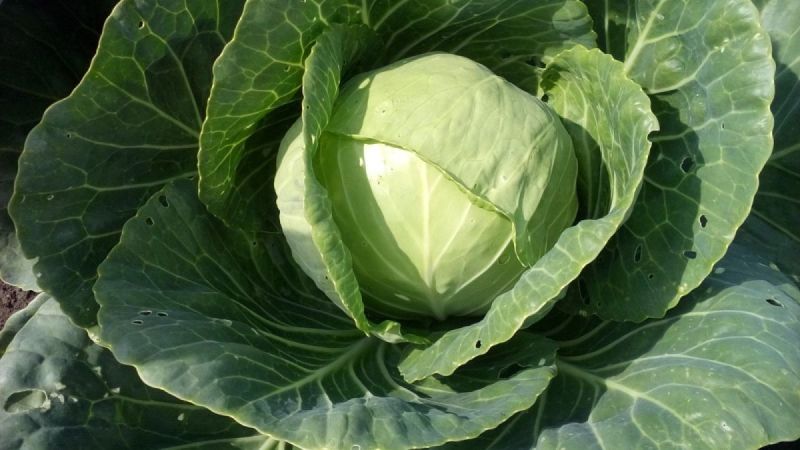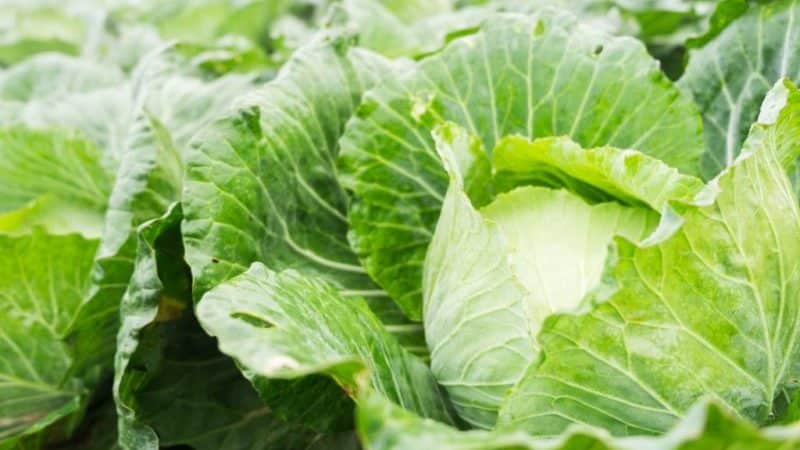Growing rules and selection of early cabbage varieties
Like many other vegetable crops, cabbage varieties are divided into three groups: early-, mid- and late-ripening. In many farms, early varieties are grown to obtain the first fresh greens. The harvest is harvested at the beginning of summer. Juicy crispy cabbage is consumed as part of vegetable salads, replenishing the lack of vitamins and fresh fiber.
In the article you will find a description and photo of early varieties, as well as recommendations for growing them.
Description of early cabbage

Early ripening cabbage has a short ripening period - its growing season lasts 75-110 days. The first harvest takes place in mid-June. The short ripening period allows farmers to grow the vegetable twice per season.
Features of early varieties:
- light weight of heads of cabbage,
- relatively loose structure,
- dense core
- crispy, juicy, tender leaves.
The vegetable is consumed fresh in the preparation of vitamin salads, soups and cabbage soup are cooked from it. Growing cabbage is not difficult, but if harvested untimely and excessively watered, the heads of cabbage will crack. Early varieties can withstand temperature drops to 0...-2°C.
Early cabbage is less resistant to diseases and has a short lifespan. shelf life, not used for sourdough, pickling.
In central Russia, seeds for seedlings are sown at the end of February, in Siberia, in the Urals - at the end of April.
Attention! Early varieties of cabbage are suitable for growing in open ground in the southern and central regions of the country.In the northern regions, the crop grows in greenhouse conditions.
The best early varieties of white cabbage
Varieties of early ripening cabbage not much, but all of them are widely used to obtain the first vitamin greens.
Early varieties
Here are the names of early varieties and hybrids of white cabbage:
- June - in demand in areas with a temperate climate. The head of cabbage is not loose, weighing 2-3 kg.
- Dumas F1 is a high-yielding hybrid that is not prone to cracking.
- Rinda F1 is a hybrid with spreading, large leaves. Grown in the southern regions. At +7°C forks are stored up to 110-120 days.
- Taurus F1 is the most productive variety. The heads are large, 4-6 kg. The hybrid has high immunity to crop diseases.
- Tobia F1 - has high yields, forks reach a weight of 3-3.5 kg.
- Polar region F1 – resistant to short-term frosts.
- Surprise F1 - average fork weight 1.3-1.5 kg.
- Zantorino F1 - has dense heads weighing 1.6-2 kg.
- Early Ditmar - fork weight 1.5-2.1 kg.
- Nozomi is a high-yielding variety, the average weight of heads of cabbage is 1.8-2 kg.
- Zolotovorotskaya - has a compact rosette weighing 1.8-2.2 kg.
Description of Golden Hectare cabbage

Among the early varieties, Golden Hectare cabbage is especially popular. The variety is used by summer residents and industrial farmers. The culture was bred by employees of the All-Russian Institute of Plant Growing named after. N.I. Vavilova in 1938. Recommended for cultivation in the Far Eastern, Ural, East Siberian, Northwestern, Central, Volga-Vyatka, Lower and Middle Volga regions of the country.
The growing season of the Golden Hectare is 95-100 days. The weight of the heads varies from 1.7 to 3.2 kg, individual forks reach 4 kg. The socket is compact, half raised.The leaves are medium-sized, gray-green in color, and have a waxy coating. Their edges are smooth, sometimes slightly wavy. Leaf petioles are short. The forks are medium density and have a rounded shape. The stalk is short and thick. The root is taproot, with branches, reaches 38-40 cm in length.
The golden hectare is characterized by consistently high yields. With proper cultivation techniques, 55-80 t/ha is harvested, which is significantly higher than other early varieties.
Cabbage retains its presentation during long-term transportation. It tolerates short-term drops in temperature to sub-zero levels and dry periods. Heads of cabbage are not prone to cracking when exposed to excess moisture. The variety is resistant to diseases, but has poor resistance to clubroot. The shelf life does not exceed 1 month.
Golden hectare contains a large amount of vitamin C. It is used for preparing vegetable salads.
Attention! The variety grows well on fertile soils and black soil.
Ultra early varieties
Ultra-early cabbage varieties are characterized by a short ripening period. From the day the seedlings are planted in the ground, 40-60 days pass. The growth and development of these varieties takes place during the period of active movement of juice in the plants, so the forks are prone to cracking.
Ultra-early cabbage resists short-term frosts, bolting, and damage by insect pests. It contains a lot of useful substances, vitamins, amino acids.
Reference! Ultra-early cabbage hybrids are unsuitable for long-term storage.
Well-known ultra-early varieties include:
- Akira F1 – fork weight 1.2-2.3 kg.
- Jetodor F1 – weight 1.2-1.5 kg. The hybrid is resistant to fusarium.
- Dumas - heads of cabbage of medium density, weighing 1.2-1.4 kg. They develop well even in dense plantings.
- Cossack F1 - forks weighing 1.4-1.5 kg, do not crack.
- Kevin F1 - average weight 0.7-1 kg.
- Legat F1 – average weight 0.8-1.1 kg.
- Mirror F1 – weight 1.3-1.5 kg, does not crack.
- Pandion F1 – weight 0.9-1.6 kg, resistant to vascular bacteriosis.
- Parel F1 – head weight 1.5-1.6 kg.
- Pasadena F1 – weight 0.5-2.4 kg.
- Reima F1 – weight 1.1-2.3 kg, resistant to downy mildew.
- Sunta F1 – weight of heads of cabbage is 1.1-2.1 kg.
- Tiara F1 – weight 1.3-2.2 kg.
- Transfer F1 is resistant to vascular bacteriosis, heads of cabbage weigh 0.8-1.5 kg.
- Champ F1 - weight 1.3-2 kg, resists fusarium well.
- Express F1 is a high-yielding variety with good taste characteristics. The weight of the heads of cabbage is 1-2 kg. Shelf life 100-120 days.
- Etma F1 – weight of heads of cabbage is 1.4-1.5 kg.
Treatment of early cabbage seeds before sowing
First, the seeds are calibrated: large specimens are selected - 1.3-1.7 mm in diameter. Selected seeds are checked for quality: immersed in a solution of table salt (40 g/l of water) for 30 minutes. During this time, high-quality seeds will sink to the bottom, empty ones will float up and are discarded. Then the salty solution is drained, the seeds are washed with running water, and dried on a paper napkin.
Selected seeds are also tested for germination. To do this, 30-40 seeds are placed in a damp cloth for 3 days, kept in a warm place at a temperature of 22-25°C, making sure that they do not dry out. If after 3 days at least 90% of the seeds have sprouted, they are used for sowing.
To prevent fungal diseases, the seeds are heated. They are placed in a gauze bag, placed for 20-25 minutes in water at a temperature of +47...+50°C, then immersed in cold water for 3 minutes, dried on a paper napkin.
The crop's resistance to temperature changes is increased by hardening the seeds. At night they are placed in the refrigerator on a shelf at a temperature of +2...+3°C, during the day they are kept at room temperature. The hardening procedure is carried out for 5-6 days, during which weak seeds die.
To prevent diseases, cabbage seeds are disinfected in a 1% solution of potassium permanganate for 40-60 minutes, treated for 2 minutes with a 10% solution of hydrogen peroxide. The preparations “Baktofit”, “Planriz”, “Fitosporin-M”, “Maxim” are also used for disinfection.
To speed up germination, before planting, seeds are soaked for a day in growth stimulants “Epin” (4 drops/1 liter of water), sodium humate, potassium humate.
Reference. Seeds purchased at garden centers come in a variety of colors. This indicates that they have undergone pre-sowing preparation (warming, dressing, degreasing) and are ready for planting.
Early varieties of cabbage are sown in early March. Seedlings are grown on a windowsill or in wooden containers in greenhouses. For cultivation, prepare a mixture consisting of equal parts of turf soil, peat, and sand. To a bucket of this mixture add 20 g of nitrophoska, 1 tbsp. wood ash.
The soil is pre-moistened, grooves are made 1.5 cm deep. The seeds are laid out at a distance of 2 cm. A distance of 4-6 cm is left between the grooves, covered with soil, moistened with warm water, and covered with a transparent film. Seeds are germinated at a temperature of +18…+23°C. Greenhouses are regularly ventilated.
Shoots appear in 3-5 days. After 2 true leaves grow on them, they are picked into small pots. After the formation of 3 pairs of true leaves, the seedlings are transferred to a permanent place in open ground.
Early varieties of cabbage are planted in open ground in late April - early May. Before planting on the site, hardening is carried out.To do this, 14 days before the expected planting date, boxes with seedlings are taken out to the balcony for 2 hours, increasing the time every day. After planting in open ground, the seedlings are initially protected from direct sunlight by covering with agrofibre. When grown in greenhouses, provide access to cool air.
Reviews from gardeners
Here are some reviews about growing the best early varieties of cabbage.
Vladimir, Tambov: “Last season I grew the early variety Golden Hectare on the plot. I planted the seeds in February in peat pots on the window. In the spring I transplanted it to the site. The heads of cabbage turned out to weigh 2-2.5 kg. I really liked the taste."
Natalya, Saratov: “We like to grow the June cabbage variety. The harvest is harvested at the end of June. The heads of cabbage are from 1 to 2 kg, not too dense, but not loose either. The forks crack when there are sudden changes in temperature, so at first we had to cover the beds at night.”
Olga, Moscow region: “I like to grow early varieties of cabbage for vitamin-rich greens in early June. The forks of early varieties are small in size, so they occupy a small area of the site. For intensive growth of heads of cabbage, I use abundant but not frequent watering and mineral fertilizing.”
Conclusion
Early cabbage varieties are popular among farmers and gardeners due to their minimal ripening time. The first harvest is harvested in early summer, so many gardeners practice replanting early cabbage. This allows you to harvest fresh herbs twice a season and prepare healthy, vitamin-rich salads throughout the summer.